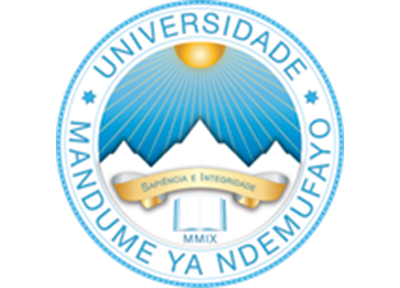FAQs
Undernutrition is defined as the physical status presented when a person’s diet does not provide adequate nutrients for growth and maintenance or if they are unable to fully utilize the food they eat due to illness.
There are different types of undernutrition:
- Chronic Undernutrition (Stunting) is commonly identified as a child who is too short for his or her age. Stunting is the result of long-term nutritional deprivation and often results in irreversible physical and mental consequences as poor body growth, delayed mental development, leading to poor school performance and reduced intellectual capacity.
- Acute undernutrition (Wasting) is commonly identified as a child who is too thin for his or her height. It is characterized by a rapid deterioration in nutritional status over a short period of time with consequences that can be reversible if treated on time, and it is usually a consequence of acute insufficient food intake or a high incidence of infectious diseases, especially diarrhea.
- Micronutrient deficiency is defined as a suboptimal nutritional status caused by a lack of intake, absorption, or utilization of one or more vitamins or minerals. Iodine, vitamin A, and iron deficiencies are the most important in global public health terms: their deficiency represents a major threat to the health and development of populations worldwide, particularly children and pregnant women in developing countries.
Undernutrition is a multicausal problem, which create many challenges in understanding the condition and finding solutions through interventions and policies. While a complex problem, different immediate, underlying and basic causes of undernutrition have already been identified and categorized:
- The basic causes encompass social, economic, environmental, and political issues that lead to the lack of or unequal distribution of capital, perpetuating poverty and the neglection of human rights. The basic causes influence and increase the development of underlying causes.
- The underlying causes are household food insecurity (see below), inadequate healthcare and feeding practices, inadequate access to health services and living in an unhealthy or “unsafe” environment health wise.
- The immediate causes of undernutrition are inadequate food intake and disease exposure, and are directly affected by the underlying causes.
Understanding this is of uttermost importance while designing undernutrition interventions (see below), as undernutrition is not caused solely by lack of adequate, nutritious food, but rather has a multifactorial nature creating multiple pathways that lead to undernutrition, presenting the necessity of different types of undernutrition interventions addressing the multiple causes at every level.
Food security is the cornerstone for addressing undernutrition. It is defined as “physical and economic access by all people, at all times, to sufficient safe and nutritious food that meets their dietary needs and food preferences for an active and healthy life”, and later developed into four main dimensions: physical availability of food, economical and physical access to food, food utilization (the way the body makes use of the most of various nutrients in the food) and stability of the first three dimensions over time. For the nutrition goals to be achieved, food security must be ensured by fulfilling all four dimensions simultaneously.
Nutrition interventions or programs are purposeful planned actions intended to positively change a nutrition related behavior, environmental condition or aspect of health status that improves the nutrition status of an individual, target group or community at large.
Nutrition interventions can be nutrition-specific or nutrition-sensitive:
- Nutrition-specific interventions and programs address the immediate determinants of fetal and child nutrition and development: adequate food and nutrient intake, feeding, caregiving and parenting practices, and low burden of infectious diseases. Examples are promotion of breastfeeding practices, micronutrient supplementation, dietary diversification, and disease prevention and management.
- Nutrition-sensitive interventions and programs address the underlying determinants of fetal and child nutrition and development and incorporate specific nutrition goals and actions: food security, adequate caregiving resources at the maternal, household and community levels, access to health services and a safe and hygienic environment. Examples are social safety nets, WASH (water, sanitation and hygiene) strategies, family planning services and education, and agricultural development.
According to the results of the Multiple Indicator and Health Survey (IIMS) 2015-2016, in Angola more than 2.1 million (38%) children under 5 years of age are chronically undernourished, with this figure slightly higher in Huila and Cunene provinces (44% and 39%, respectively). According to UNICEF data, between 42,000 and 76,000 children between the ages of 0 and 5 die annually because of undernutrition in the world. In other words, and according to World Health Organization (WHO) and the Global Nutrition Report, undernutrition is estimated to be linked to between 33% and 60% of all under-5 mortality cases. Also, in Angola there is a high prevalence of micronutrient deficiencies, especially in months and pregnant women and children under 5 years of age, with up to 65% of children presenting anemia.
Combating undernutrition is a top priority to promote the country’s long-term social and economic development. Therefore, the Angolan Government has developed a Multisectoral Strategic Plan for Nutrition (PEMN) 2019-2025, which presents a broad package of interventions that, over a 4-year period, aims to improve the nutritional status of women before, during, and after pregnancy and of children up to 5 years of age, with the goal of reducing the prevalence of chronic undernutrition in children under 5 years of age.
The prevailing drought situation has caused a worsening of the nutritional situation in the southern provinces of Angola. In addition to the existing nutritional crisis in the region, the recent/current pandemic of COVID-19 may jeopardize the already weak health system and socio-economic fabric. Indirect consequences beyond health may include food insecurity, lack of medical supplies, loss of income and livelihoods, and difficulties in enforcing distancing measures, among others.
There are numerous existing strategies focused on reducing chronic undernutrition, but most have been evaluated in isolation and in contexts other than Angola, so the actual impact that combining various interventions could have is still unknown.
This is the main reason why The CRESCER project is conducting operational research on different nutrition interventions to prevent undernutrition and reduce mortality in children under 5 years of age in the Huila and Cunene provinces in Angola. The added value of an operational research is that these interventions are tested in the communities and on real conditions and, therefore, the evidence generated in the study can inform policies and be adapted to a specific context.
Our investigation will therefore generate scientific evidence and will provide practical “in the field” knowledge about the best strategy and specific recommendations to reduce chronic undernutrition and mortality in children under years of age in southern Angola, allowing it to be extrapolated, replicated and adapted to help nutrition programs at the national level.
Based on previously published studies on strategies to improve child undernutrition and the baseline situation of the population of the Huíla and Cunene provinces (demographic characteristics, undernutrition indicators, access to WASH (water, sanitation and hygiene), health coverage, present stakeholders involved, etc.), the CRESCER project will perform a community cluster randomized controlled trial to evaluate individual and combined nutrition-specific and nutrition-sensitive strategies on its cost-effectiveness to reduce chronic undernutrition, morbidity, and mortality in children under 5 years of age. The study also aims to detect the main gaps of the strategies evaluated, and improve the nutritional intake, quality and variety of the diet in households of the provinces studied.
Cluster randomized controlled trials are scientific research studies in which effects on groups of individuals (called clusters) rather than individuals themselves are evaluated. In the CRESCER Project, the clusters will be selected different towns or communities in the area.
The trial is called “randomized” because these clusters or groups will be arbitrarily assigned in the study to a group (intervention or control), so participants will have an equal chance of being assigned to either group, avoiding selection bias and therefore having comparable groups. As a result, we will have a control group, which won’t receive any specific intervention except for a basic health and nutrition package that we call “Standard of Care (SOC)” (see below); the intervention group will test the different nutrition interventions in addition to the standard of care.
The CRESCER project will evaluate the following nutrition interventions in both isolated and combined manners:
Standard of Care (SOC): The SOC is a “package” of interventions that is composed of three main components: The usual activities and interventions carried out by the ADECOS (see below), Community Led Total Sanitation (CLTS), and the Baby-WASH Strategy.
- Baby-WASH Strategy: Baby-WASH (water, sanitation and hygiene) is a strategy to implement household interventions aimed at extending health care and nutrition practices to hard-to-reach and underserved areas, thus integrating access to safe drinking water, sanitation and proper hygiene in in the contexts of infant and newborn health, and early childhood development and nutrition.
- Community Led Total Sanitation: Community Led Total Sanitation (CLTS) is an approach to eliminate open defecation at community level through awareness raising and accessible sanitation options. CLTS involves all community members, and the basic premise is that it can only be achieved if led and implemented by the communities themselves. The CLTS approach will be used to create community understanding of the link between open defecation and inadequate sanitation and the risk of chronic undernutrition and impaired cognitive development in their children, as a strong incentive for families to adopt these practices, leading to greater ownership and sustainability.
Cash-Transfers: The CRESCER Project will evaluate Cash-Transfers and its impact in improving the quality and diversity in household nutrition. Cash-Transfers are a form of Cash-based Interventions (CBI), interventions that are becoming one of the most effective means of alleviating vulnerability, strengthening the capacities of communities, and preventing undernutrition. These interventions can be in the form of cash-for-work, food vouchers, or cash transfers, adapting accordingly to the context and specific needs of the population targeted.
Small Quantity Lipid-based Nutrient Supplements (SQ-LNS): SQ-LNS are a single-dose food supplement in sachets containing macro- and micronutrients such as iron, vitamin A, zinc, and other vitamins and minerals that can be directly consumed or added to any semi-solid food at home to increase the content of essential nutrients and to enrich the local diets.
Previous research indicates that it effectively contributes to preventing undernutrition, specifically micronutrient deficiencies and chronic undernutrition, when administered as a preventive strategy around the 1.000 days window (from pregnancy until the baby is 2 years old). To the aim of this study, SQ-LNS will be administrated to pregnant women and, subsequently, to their children from 6 months of age to 2 years.
Most of the interventions will be carried out by the Health and Community Development Agents (ADECOS, for its initials in Portuguese), the cornerstone of the CRESCER project, under the coordination of the Instituto de Desenvolvimento Local (FAS), as one of the project’s local partners. The ADECOS’ work is focused fundamentally on the development of their communities and the promotion of health in the broadest sense, paying attention to individual, family, and social determinants.
The ADECOS are people selected among the inhabitants of a community, who stand out for their human qualities and contribute to the improvement of the living conditions in communities and assume a professional work within the organic framework of the Municipal Administrations. The strategies that will be implemented by the project will be complementary to those already carried out routinely by the ADECOS.






